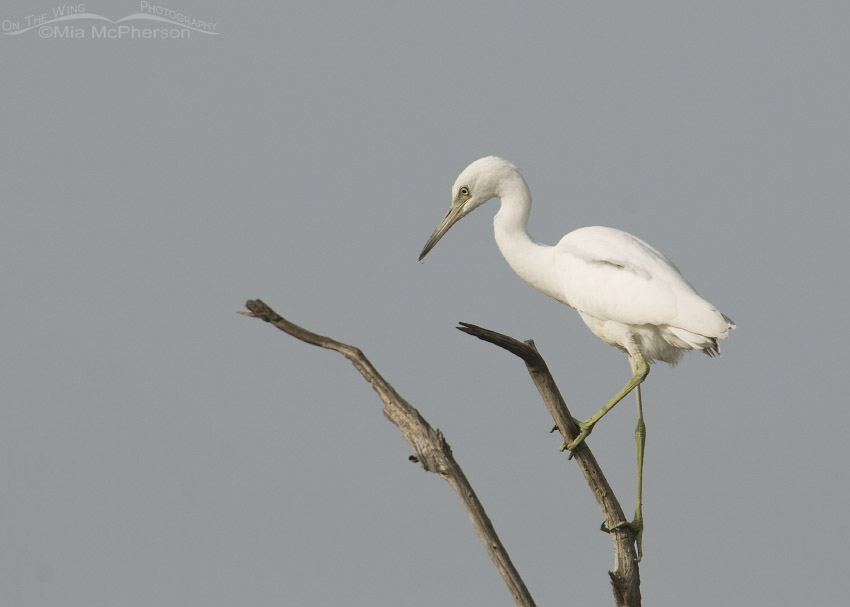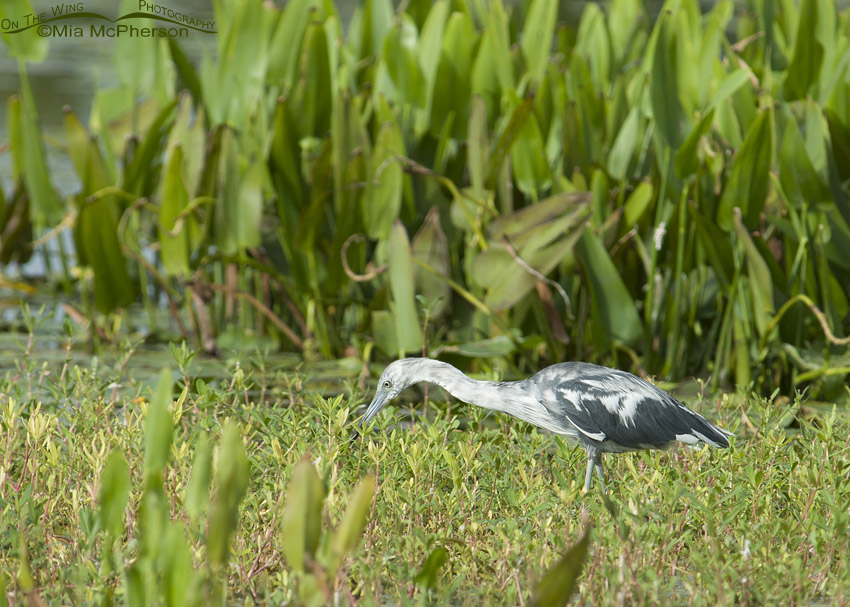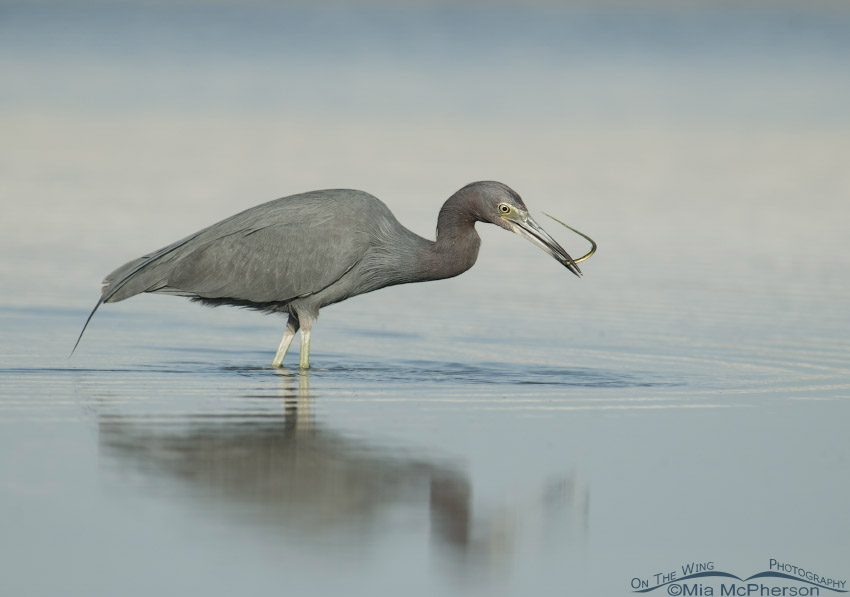 First year Little Blue Heron – Nikon D200, handheld, f7.1, 1/1250, ISO 200, Nikkor 80-400mm VR at 400mm, natural light
First year Little Blue Heron – Nikon D200, handheld, f7.1, 1/1250, ISO 200, Nikkor 80-400mm VR at 400mm, natural light
Okay, the title of my post says “Little Blue Heron” so why is the bird above white, why isn’t it blue as the name of this species suggests? It is because juvenile Little Blue Herons are white after they hatch and will gradually obtain their “blue” plumage through molts.
The photo above was taken at Roosevelt Wetland, Pinellas County, Florida on June 28, 2008. This young Little Blue Heron was hatched earlier that year and was out in the wetlands hunting on its own when it flew up into a dead tree.
Juvenile Little Blue Herons can be mistaken for Snowy Egrets but their greenish legs, blue gray loral skin (near the eyes) and bicolored bills can be used to differentiate between the two species. To a lesser degree they are also confused with Cattle Egrets by novices in bird identification.
It is thought that juvenile Little Blue Herons are accepted more than the adults by the more aggressive Snowy Egrets because of their white plumage which may give them an advantage in the first year of their lives for obtaining food.
There are times later in their hatch year when juvenile Little Blue Herons will show spots of “blue” on their outer primaries, or flight feathers.
 Immature Little Blue Heron – Nikon D200, handheld, f6.3, 1/320, ISO 160, Nikkor 80-400mm VR at 400mm, natural light
Immature Little Blue Heron – Nikon D200, handheld, f6.3, 1/320, ISO 160, Nikkor 80-400mm VR at 400mm, natural light
The photo above was also taken at Roosevelt Wetland, Pinellas County, Florida on June 28, 2008 and shows a Little Blue Heron that was hatched the previous year in 2007. It was wonderful for me to have these two Little Blue Herons so close to each other on the same day to photograph for comparison.
This phase or Formative Plumage is often called Pied, Piebald or Calico because of the mix of white and bluish plumage. The amount of white and blue plumage can vary widely in Little Blue Herons at this stage in their lives.
 Adult Little Blue Heron snags a pipefish – Nikon D200, handheld, f6.3, 1/800, ISO 160, Nikkor 80-400mm VR at 400mm, natural light
Adult Little Blue Heron snags a pipefish – Nikon D200, handheld, f6.3, 1/800, ISO 160, Nikkor 80-400mm VR at 400mm, natural light
This photo shows an adult Little Blue Heron in nonbreeding plumage right after it snagged a pipefish in one of the lagoons at Fort De Soto County Park in February of 2009. Adult Little Blue Herons have blue-gray plumage on their bodies and wings while their heads and necks are a purplish maroon color. They are not a bright blue, or a royal blue, they are a gray blue.
So, Little Blue Herons start off their lives with white plumage, then look piebald with blue and white feathers and finally look more “blue” as adults. Some people call these plumage phases “morphs”.
Little Blue Heron sightings are rare in Utah but I saw them quite often in Florida where they are year round residents.
Life is good.
Mia
Click here to see more of my Little Blue Heron photos plus facts and information about this species.


Very interesting and wonderful images too. And nice to get so much rain which we haven’t seen for awhile.
I am endlessly fascinated by the colour changes birds go through as they move towards adulthood.
Thank you for this series.
I’m always learning from you! Thank you. Actually, I prefer the “calico” phase.
Thanks for this. I think I need to go back to my Padre Island photographs and make sure I correctly identified all the herons and egrets. Much appreciated.
I had no clue about these color phases and wonder how many times i saw one and thought it was an egret!. I have never seen the ” calico” phase as its plummage starts to turn “blue”…they must be quite beautiful….
(Hi, Jorge!)
Thank you for today’s lesson.
Very interesting.
And the photos are great too.
VERY NICE SERIES MIA… WELL DONE… ;-)))
Beautiful photos! I once saw a blue heron in it’s first summer and could not figure out what it was. From your article and photos i know know it was a young little blue heron 😊
Beautiful photos, MiA.